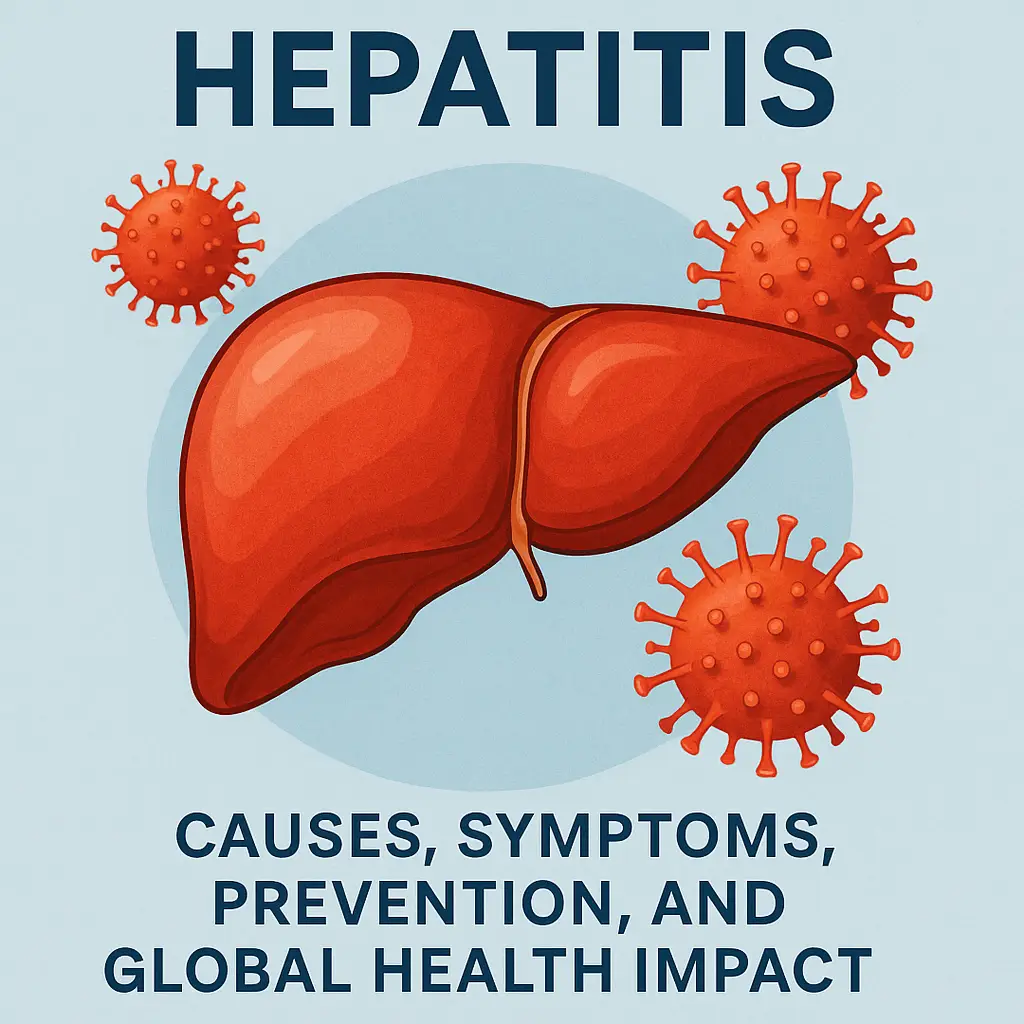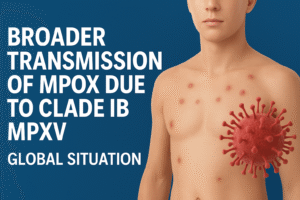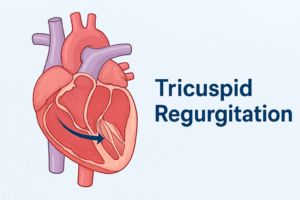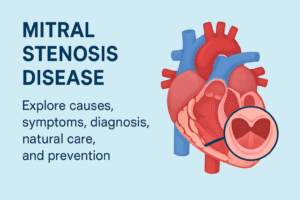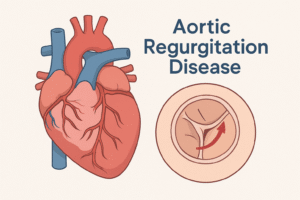Hepatitis is an inflammation of the liver, a vital organ responsible for digestion, detoxification, and nutrient storage. Liver inflammation affects its ability to function properly and, if untreated, can progress to cirrhosis, liver failure, or liver cancer.
According to the World Health Organization (WHO), around 354 million people worldwide live with chronic hepatitis B and C infections, making hepatitis one of the most pressing global health challenges. Despite available vaccines and treatments, the disease often goes unnoticed until advanced stages.
Causes of Hepatitis
Hepatitis can result from multiple causes:
- Viral Infections: Hepatitis viruses A, B, C, D, and E are the most common triggers.
- Excessive Alcohol Consumption: Long-term alcohol intake damages liver cells, leading to alcoholic hepatitis.
- Medications and Toxins: Overuse of drugs such as acetaminophen, exposure to industrial toxins, or harmful herbal supplements.
- Autoimmune Hepatitis: The immune system mistakenly attacks liver cells.
- Metabolic Disorders: Non-alcoholic fatty liver disease (NAFLD) may progress into hepatitis.
Stages of Hepatitis Progression
Hepatitis develops gradually if untreated:
- Acute Hepatitis: Short-term infection lasting under six months; often mild or symptomless.
- Chronic Hepatitis: Infection persisting for over six months, common with HBV and HCV.
- Fibrosis: Scar tissue forms due to prolonged inflammation.
- Cirrhosis: Severe scarring disrupts liver function.
- End-Stage Complications: Liver failure or hepatocellular carcinoma (liver cancer).
Types of Hepatitis
The main viral forms are:
- Hepatitis A (HAV): Spread through contaminated food or water; usually self-limiting.
- Hepatitis B (HBV): Transmitted via blood, sexual contact, or mother-to-child; can become chronic.
- Hepatitis C (HCV): Blood-borne virus often leading to chronic liver damage.
- Hepatitis D (HDV): Co-infection with HBV, causing severe outcomes.
- Hepatitis E (HEV): Waterborne; common in areas with poor sanitation.
Symptoms of Hepatitis
Symptoms may be mild or absent initially. Common signs include:
- Fatigue and weakness
- Loss of appetite
- Nausea and vomiting
- Abdominal pain (upper right quadrant)
- Dark urine and pale stools
- Jaundice (yellowing of eyes and skin)
- Mild fever, muscle, or joint pain
Diagnosis of Hepatitis
Early detection prevents complications. Common diagnostic methods:
- Blood Tests: Detect viral antigens, antibodies, and liver enzyme abnormalities.
- Imaging Tests: Ultrasound, MRI, or CT scans identify inflammation, scarring, or tumors.
- Liver Biopsy: Tissue sample for detailed evaluation.
- FibroScan: Non-invasive test measuring liver stiffness to detect fibrosis or cirrhosis.
Treatment Without Medicine
Alongside antiviral treatment, lifestyle changes support liver recovery:
- Adequate Rest: Boosts the immune system.
- Hydration: Helps flush toxins.
- Avoid Alcohol and Tobacco: Prevents further liver damage.
- Balanced Nutrition: Supports healing.
- Stress Management: Yoga and meditation enhance well-being.
- Herbal Support (with medical guidance): Milk thistle may protect liver cells.
Prevention of Hepatitis
Prevention is the most effective approach:
- Vaccination: Safe and effective for Hepatitis A and B.
- Safe Injections: Use sterile needles.
- Safe Sexual Practices: Condoms reduce HBV transmission.
- Hygiene and Sanitation: Handwashing, safe water, and proper cooking prevent HAV and HEV.
- Maternal Screening: Pregnant women should be tested for HBV.
- Blood Safety: Screening reduces transmission risk.
Healthy Diet for Hepatitis Patients
A liver-friendly diet supports recovery:
- Protein: Lean meats, fish, eggs, legumes.
- Fruits & Vegetables: Rich in antioxidants to reduce inflammation.
- Whole Grains: Provide energy and fiber.
- Healthy Fats: Omega-3s from fish, flaxseeds, and walnuts.
- Avoid: Processed foods, fried meals, sugary drinks, and excess salt.
Risk Factors for Hepatitis
Higher risk populations include:
- Infants born to infected mothers
- Healthcare workers exposed to blood
- People sharing needles
- Individuals receiving unscreened blood products
- Residents in regions with poor sanitation
- People engaging in unprotected sex
Global Impact of Hepatitis
Hepatitis is a global health crisis:
- 1.1 million deaths annually due to viral hepatitis complications (WHO).
- Chronic HBV and HCV account for most liver cancer cases worldwide.
- Hepatitis causes more annual deaths than HIV/AIDS, malaria, or tuberculosis (Lancet Global Health Commission, 2022).
- UN Sustainable Development Goal 3.3 aims to eliminate viral hepatitis by 2030, reducing new infections by 90% and mortality by 65%.
Challenges like limited healthcare, vaccine access, and lack of awareness hinder progress, especially in low- and middle-income countries.
Frequently Asked Questions (FAQs)
1. Is hepatitis curable?
HAV and HEV are usually self-limiting. HBV can be managed but not always cured. HCV can be cured with direct-acting antivirals.
2. How is hepatitis transmitted?
HAV and HEV spread through contaminated food and water; HBV, HCV, and HDV spread through blood, unprotected sex, or mother-to-child.
3. Are vaccines available for all types?
Vaccines exist for Hepatitis A and B; no vaccines are currently available for C, D, or E.
4. Can hepatitis cause liver cancer?
Yes, chronic HBV and HCV are major risk factors for liver cancer.
5. What lifestyle changes help recovery?
Avoid alcohol, follow a balanced diet, stay hydrated, and manage stress.
6. Is hepatitis dangerous during pregnancy?
Yes. HBV and HEV can be transmitted to newborns, so early screening and neonatal vaccination are essential.
Conclusion
Hepatitis is a serious but preventable global health problem. Vaccination, safe practices, early detection, and lifestyle modifications can significantly reduce the disease burden. Achieving WHO’s 2030 goal requires coordinated public health strategies, awareness campaigns, and improved healthcare systems.
By adopting preventive measures and ensuring timely treatment, millions of lives can be saved from the silent yet serious consequences of hepatitis

